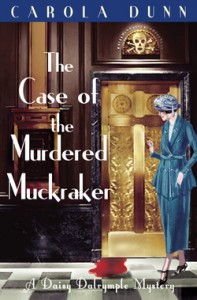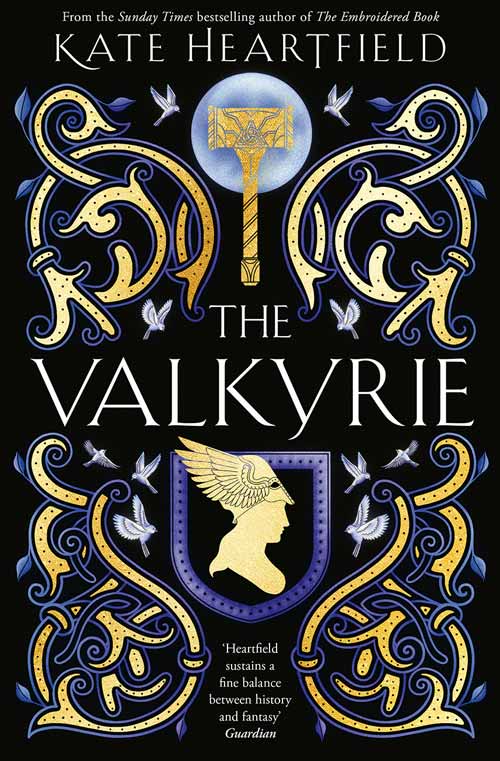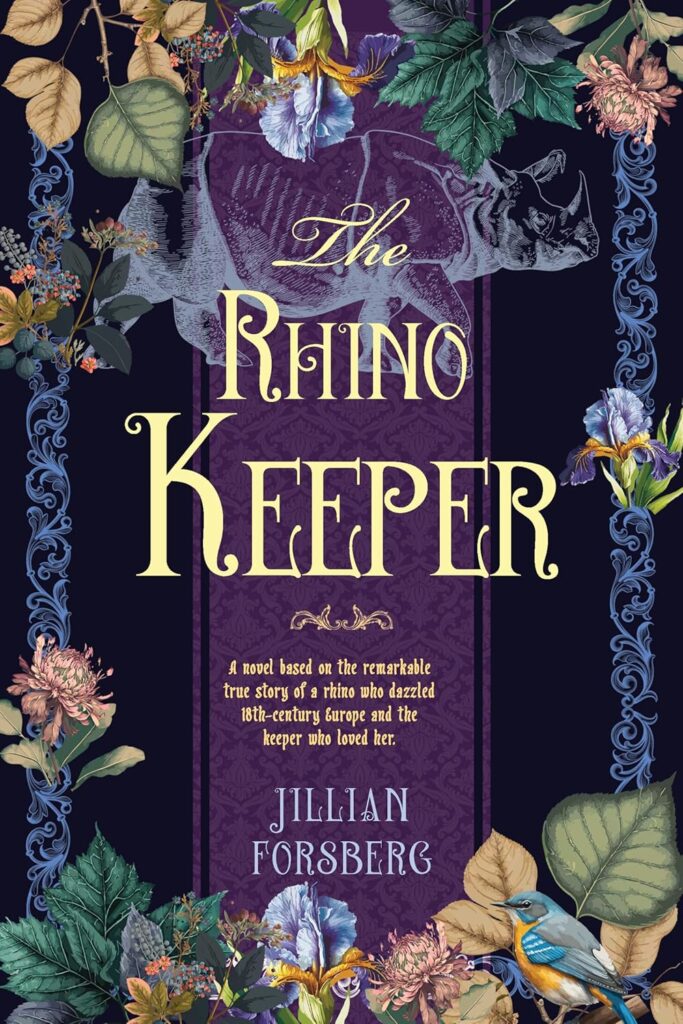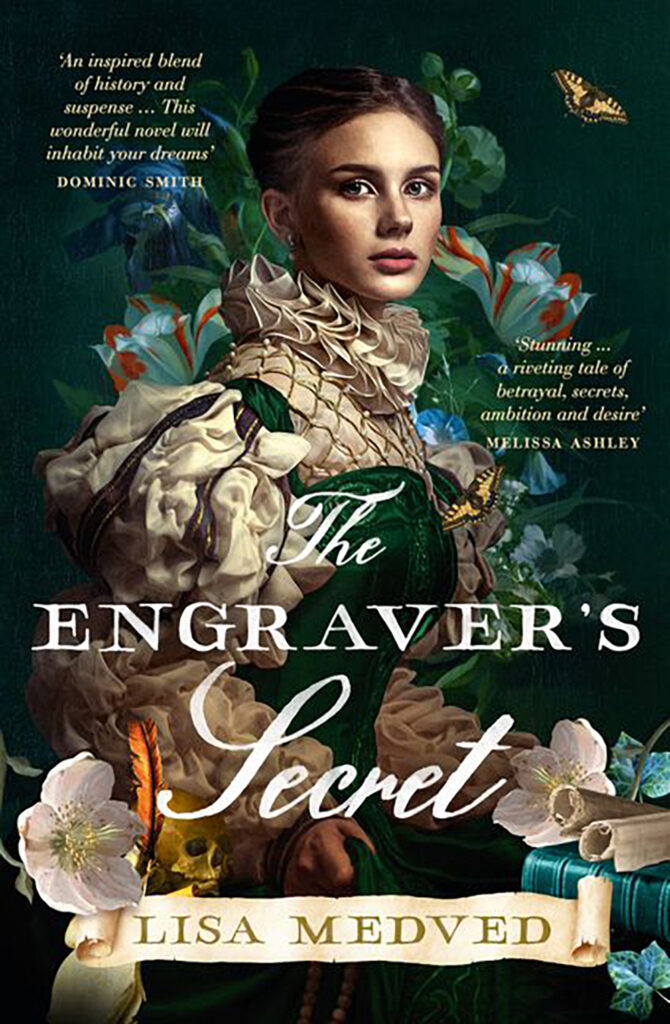Historical Fiction in 2001: The Report from America
Sarah Johnson
Sarah Johnson surveys US-published historical fiction at the turn of the 21st century.
In the publishing world in America today, the tide seems to have finally turned in favor of the much-maligned historical novel… or has it? On the one hand, individual works of historical fiction are frequently mentioned (and highly praised) in review sources such as the New York Times and Publishers Weekly. The most recent literary awards in American fiction have all been won by historical novels: these include Susan Sontag’s In America (National Book Award, 2000) and Michael Chabon’s The Amazing Adventures of Kavalier & Clay (Pulitzer Prize, 2001). Bestselling thriller authors such as John Grisham, David Baldacci, and Michael Crichton have written historical novels in the past year, to rave reviews, and Oprah’s Book Club has brought numerous well-deserving historicals, including Lalita Tademy’s Cane River, to a wide audience.
 On the other hand, a number of historical novelists, both published and unpublished, have had great difficulty persuading agents and publishers to consider their manuscripts, for the simple reason that “historical fiction doesn’t sell.” One needs only to join the HNS electronic discussion group to hear their complaints.
On the other hand, a number of historical novelists, both published and unpublished, have had great difficulty persuading agents and publishers to consider their manuscripts, for the simple reason that “historical fiction doesn’t sell.” One needs only to join the HNS electronic discussion group to hear their complaints.
Clearly, there’s something complex at work here. To investigate this issue further, during summer 2001 I sent out surveys to all major U.S. publishers who indicated in Writer’s Market that they publish historical fiction. Over the next month, I received some helpful responses. I also spoke to a number of individual editors, authors, and agents in the hopes that they might be willing to share thoughts on current trends as well as opinions on what it takes to get a historical novel published in America today. The results of these discussions form the bulk of this article.
To get some initial background, I took a closer look at the historical novels that were given starred reviews by Publishers Weekly in 2000 – 48 novels in all, per HNS’ usual definition. These novels encompass a wide range of publishers, settings, and time periods. Many are also from first time authors. Interestingly, nearly all fall into the category of “literary fiction.” The list also excludes novels appearing from the most prolific publishers of historical fiction (Forge, St. Martin’s Press, and Five Star), although positive reviews of these publishers’ novels frequently appear in PW’s pages.
Literary vs. Traditional Historicals
Is it historical fiction as a whole that’s popular today, or is it simply literary historical fiction? Several authors and agents recounted to me the troubles that they’ve had in selling their novels, all of which are historical fiction in its traditional sense. Juliet Waldron turned to e-publishing for her novel Mozart’s Wife after receiving rejections that her novel was “too historical” and “too sophisticated” (from romance publishers) or “too light” (from literary publishers). “There’s just too much competition in ‘history’ these days for the plain vanilla old-fashioned, researched, women’s historical to easily find a publisher,” she relates. Mozart’s Wife went on to take the fiction prize at the First Independent e-Book Awards last year.
 Richard Curtis, of the literary agency Richard Curtis Associates, Inc., has no positive words to say about the traditional historical. He writes: “I used to dote on it, but the public no longer seems to, and the publishing industry has followed suit. The classical historical fiction that combined brilliant scholarship with brilliant storytelling (The King Must Die) gave way in the eighties and nineties to historical romances, which are formula romances using the barest minimum of research.” Paul Clayton, one of Curtis’ clients, agrees that publishing historical fiction has gotten more difficult over time. Despite achieving success with his Calling Crow trilogy of Native American historicals, published by Berkley in the mid 1990s, he has had no luck thus far in finding a publisher for his fourth historical, White Seed, which dramatizes the story of the abandoned English colony at Roanoke. As turnover in the publishing business is quite high, Clayton and his agent are holding onto this novel until the market is more favorable.
Richard Curtis, of the literary agency Richard Curtis Associates, Inc., has no positive words to say about the traditional historical. He writes: “I used to dote on it, but the public no longer seems to, and the publishing industry has followed suit. The classical historical fiction that combined brilliant scholarship with brilliant storytelling (The King Must Die) gave way in the eighties and nineties to historical romances, which are formula romances using the barest minimum of research.” Paul Clayton, one of Curtis’ clients, agrees that publishing historical fiction has gotten more difficult over time. Despite achieving success with his Calling Crow trilogy of Native American historicals, published by Berkley in the mid 1990s, he has had no luck thus far in finding a publisher for his fourth historical, White Seed, which dramatizes the story of the abandoned English colony at Roanoke. As turnover in the publishing business is quite high, Clayton and his agent are holding onto this novel until the market is more favorable.
“In the publishing field, timing is half the battle,” says India Edghill, whose novel Queenmaker will appear in hardcover from St. Martin’s Press in January 2002. Despite being taken on as a client several years back by a noted literary agent, Edghill found that the market was not yet right for her novel, a retelling of the King David story from the point of view of his queen, Michal. However, in 1997, Anita Diamant’s The Red Tent – a biblical novel of Dinah – was published, to great and continued acclaim, and this paved the way for eventual publication of Queenmaker. “There are actually lots of historical novels out there, but they’re not marketed as such,” states Edghill, who noted that The Red Tent was classified as “women’s fiction” while her own novel was called “biblical fiction.”
Historical Romance, Historical Mystery
While traditional historicals may seem to be suffering, from these authors’ points of view, they continue to be popular in the library market – and with readers themselves. Many subgenres of historical fiction, such as historical mystery, romance, fantasy, and inspirational novels, have seen tremendous growth over the past few years. In fact, some authors who have successfully published novels in one subgenre (usually romance) have later switched their focus to another subgenre (typically mystery or fantasy). “There is a sag in the market for straight historical novels, although there have certainly been exceptions,” says Sharan Newman, author of the Catherine LeVendeur series of medieval mysteries. “Historical mysteries and fantasy with an historical base seem to be doing well, and there seems to be a trend to books that have a plot secret that hinges on something in the past.”
 Carola Dunn and Roberta Gellis are two other novelists whose most recent efforts have been historical mysteries. “Though I don’t have numbers to prove it, my impression is that more writers are producing historical mysteries now than when I started,” says Dunn, a Regency author who also writes the Daisy Dalrymple mystery series, set in 1920s England. Since mysteries have a larger readership than do Regencies, adds Dunn, they tend to pay better. Gellis, a writer whose historical romances have been widely praised for both their readability and historical accuracy (a rarity in the field), found that despite her earlier successes in the genre, she was not immune to the market. As she writes, “I wrote a new historical romance in my usual style, and no one would publish it… [They] added that it wasn’t commercially feasible to publish such a book at this time. I took the hint and moved on to a different genre – medieval mystery.” Fortunately, her Magdalene la Bâtarde series of medieval mysteries from Forge, set in 12th century London, has garnered her many new readers; Gellis also writes fantasy based upon Greek mythology.
Carola Dunn and Roberta Gellis are two other novelists whose most recent efforts have been historical mysteries. “Though I don’t have numbers to prove it, my impression is that more writers are producing historical mysteries now than when I started,” says Dunn, a Regency author who also writes the Daisy Dalrymple mystery series, set in 1920s England. Since mysteries have a larger readership than do Regencies, adds Dunn, they tend to pay better. Gellis, a writer whose historical romances have been widely praised for both their readability and historical accuracy (a rarity in the field), found that despite her earlier successes in the genre, she was not immune to the market. As she writes, “I wrote a new historical romance in my usual style, and no one would publish it… [They] added that it wasn’t commercially feasible to publish such a book at this time. I took the hint and moved on to a different genre – medieval mystery.” Fortunately, her Magdalene la Bâtarde series of medieval mysteries from Forge, set in 12th century London, has garnered her many new readers; Gellis also writes fantasy based upon Greek mythology.
If their experiences are any indication, the historical mystery is still alive and well in the United States. Simply looking at the sheer numbers of historical mysteries being published today easily conveys this impression. The principal publishers and imprints include Berkley Prime Crime and Signet (both Penguin Putnam), Bantam (Random House), Kensington, and Avon (HarperCollins), though smaller presses are also strong in this area. Robert Rosenwald of Poisoned Pen Press reports that his company publishes 12 original and 24 reprint mysteries in an average year, of which over 1/3 are historical. Authors associated with this press include Edward Marston, Mary Reed and Eric Mayer, and P. F. Chisholm.
Inspirational Fiction
Although no publishers of inspirational historicals responded to my survey, and their books tend not to be found on the same shelves (or even at the same types of bookstores) as straight historical fiction, their presence in the market is certainly noteworthy. This is true not only because of the vast numbers that are published, but also because they prove the point that many people enjoy reading historical fiction simply for entertainment value – in other words, because they enjoy a good story. In inspirational historicals, which tend to have a Christian emphasis (but are not exclusively so), God is a central character whose presence and guidance is felt by the main characters as they go about their daily lives. Biblical settings are common, as are novels set on the American frontier. Notable publishers and imprints in this genre include Bethany House, Waterbrook (Random House), Zondervan (HarperCollins), and Tyndale House (all Christian), Multnomah (evangelical Christian), and Deseret (Mormon). The mere fact that many major publishing houses now have an inspirational imprint is a testament to the subgenre’s popularity.
Crossing Genres: Historical Fiction and Fantasy
 While the popularity of historical mysteries won’t come as any surprise to Solander readers, what may be more unexpected, especially to British members of the HNS, is the strong overlap in both readership and authorship between historical fiction and historical fantasy. “After an initial shock, [the heavy infusion of fantasy] has begun to appeal to me, because fantasy – not elves or vampires, but the supernatural – expands the range of possibility,” explains Cecelia Holland, whose most recent novel The Angel and the Sword contains some fantastical elements. “The irony,” she continues, “is that many fantasy writers are trying to do more straight historical fiction.” Tor Books is a prime example of a publisher that handles both, with their dual imprints Tor (sci-fi and fantasy) and Forge (straight historical fiction, westerns, and mysteries). And indeed many authors from Tor and Forge cross over to publish in both genres.
While the popularity of historical mysteries won’t come as any surprise to Solander readers, what may be more unexpected, especially to British members of the HNS, is the strong overlap in both readership and authorship between historical fiction and historical fantasy. “After an initial shock, [the heavy infusion of fantasy] has begun to appeal to me, because fantasy – not elves or vampires, but the supernatural – expands the range of possibility,” explains Cecelia Holland, whose most recent novel The Angel and the Sword contains some fantastical elements. “The irony,” she continues, “is that many fantasy writers are trying to do more straight historical fiction.” Tor Books is a prime example of a publisher that handles both, with their dual imprints Tor (sci-fi and fantasy) and Forge (straight historical fiction, westerns, and mysteries). And indeed many authors from Tor and Forge cross over to publish in both genres.
Denise Little, formerly an editor with Kensington’s historical romance line and now executive editor at Tekno Books, saw evidence for the overlap between historical fiction and fantasy firsthand in her years as a bookstore manager. She comments, “Certainly not every reader of historical fantasy reads historical fiction, and vice-versa, but I’d say, from my own experiences as a reader and bookseller, that about half of the audience for historical fantasy reads historical fiction. Now, the history readers and the historical fiction readers are a bit more insular – I’d say that the crossover market is about 20% of those groups.”
Author Rosemary Edghill, who has written Regency romances and mysteries in addition to historical fantasy, concurs: “I think a reader whose interest is historical novels would simply be irritated by the fantasy elements. I’ve occasionally gotten mail from readers to the effect that they were enjoying the nice historical novel or mystery I’d written until I went and messed it up by putting in all that stupid unbelievable magic.” Her alternate history fantasies, published by Forge, were originally sold to an editor with a background in fantasy, not history, which caused some interesting problems. “[My editor] kept trying to change the accurate ‘real’ history, saying it was too unbelievable, but never questioned the ‘history’ I’d set up for my alternate universe. So chalk this up to Truth really being stranger than Fiction.”
The Publishers Respond
Now, getting down to the bottom line: what exactly are publishers looking for in historical fiction? The results may be surprising. Although there is a general impression among readers that certain time periods or settings are more popular than others, no editor I spoke with mentioned a preference for any particular era or place. “We look for quality and authenticity,” says Anita Miller of Academy Chicago Publishers, who has published historical novels such as Hella Haasse’s In a Dark Wood Wandering (Charles VII’s France) and Vincent Panella’s Cutter’s Island (Julius Caesar). “We like historical mystery if it’s well done, but [overall] we publish books that are well-written and well-researched…books that have narrative flow and hold the reader’s attention.”
These sentiments are echoed by an editor at Thorndike Press/Five Star, a publisher of historical romance, mysteries, westerns, and women’s fiction primarily for the library market. While Thorndike indicated that it does not want to receive submissions other than the subgenres listed above, no preference was given for setting. Similarly, Poisoned Pen Press, which by its name one can infer only publishes mystery fiction, looks for a “strong and original voice, with period flavor and strong research.”
 Despite these claims, it’s clear from looking at the U.S. section of the Historical Novels Review over the past year that novels with pre-1800 settings are few and far between, particularly from the major publishers. Seeing this, I asked Fred Ramey, a founding editor of BlueHen (a new Penguin Putnam imprint), about his decision to publish two works of historical fiction, one of which is set in the Middle Ages. “Although two of our first four titles could be described as historical novels, it’s not their historicity that first attracted me to them,” explains Ramey. In the case of Susann Cokal’s Mirabilis, a novel of a midwife in 13th century France, Ramey was intrigued by the author’s protagonist, a character from a distant time who still speaks a modern truth. Masha Hamilton’s Staircase of a Thousand Steps, set in 1967 Transjordan, succeeds as a novel “because its emotions [and characters] are real and specific to a moment in history at a particularly volatile place,” Ramey continues. Rather than having a preference for specific settings, he concludes that “more than history alone, we are looking for characters who can move us as they take us to times and places we cannot visit so well without them.”
Despite these claims, it’s clear from looking at the U.S. section of the Historical Novels Review over the past year that novels with pre-1800 settings are few and far between, particularly from the major publishers. Seeing this, I asked Fred Ramey, a founding editor of BlueHen (a new Penguin Putnam imprint), about his decision to publish two works of historical fiction, one of which is set in the Middle Ages. “Although two of our first four titles could be described as historical novels, it’s not their historicity that first attracted me to them,” explains Ramey. In the case of Susann Cokal’s Mirabilis, a novel of a midwife in 13th century France, Ramey was intrigued by the author’s protagonist, a character from a distant time who still speaks a modern truth. Masha Hamilton’s Staircase of a Thousand Steps, set in 1967 Transjordan, succeeds as a novel “because its emotions [and characters] are real and specific to a moment in history at a particularly volatile place,” Ramey continues. Rather than having a preference for specific settings, he concludes that “more than history alone, we are looking for characters who can move us as they take us to times and places we cannot visit so well without them.”
Ann Close, a senior editor at Alfred A. Knopf, notes that although the First and Second World War seem to be popular settings these days, she doesn’t feel that any time periods or places are necessarily more marketable than others. Noting that Knopf publishes literary historical fiction, Close reports that she’s not looking for certain time periods so much as characters and themes. Two novels which she edited, Stephen Harrigan’s The Gates of the Alamo and James D. Houston’s Snow Mountain Passage, both take well-known historical events and show them from a new angle. Gates of the Alamo “incorporated new research on the Alamo to show Santa Ana’s viewpoint for a change, and gave us wonderful fictional portrayals of the Mexican people,” detailed Close, while Houston’s book, a retelling of the Donner Party story, “showed us a good hero, someone very confident but with an Achilles heel – which created some great scenes.” Disagreeing with the idea that the historical novel is dead, Close has seen more than a few modern writers turn to history to find their subjects. “Historical myths need reinterpretation every so often, and maybe this is the period we’re in now,” she explains.
Advice for Authors
According to author Cecelia Holland, historical fiction is much harder to write than many other genres, since it’s difficult to find the balance between not enough research and too much. It doesn’t help, she adds, that the research aspect of historical fiction can repress an author’s need for spontaneity and narrative flow. In the end, Holland advises new writers to persevere until they find an editor who is interested in their manuscript: “If an editor loves your work, s/he will find a way to publish it; the way to get them to love your work is to quarry down deep in yourself to find that vein of understanding unique to you, and express it. That’s the hardest part of writing, though – none of us wants to go down there where the monsters are.”
Other, more practical advice should go without saying: most publishers prefer to be approached only through agents, and those that indicate otherwise mention that potential authors should follow their writers’ guidelines to the letter. Speaking as someone who has sent unsolicited material to the editorial departments of major publishers, I can testify to the fact that publishers do mean this; my mailings (containing a survey and sample issue of Solander) received two rejection slips, in fact! The annual Writer’s Market and Guide to Literary Agents, which serve as near-comprehensive guides to publishers and agents, respectively, will provide suggestions on how authors should approach them. The consensus based on my survey results indicated that most publishers are interested in seeing a cover letter, synopsis, and the first three chapters in an initial query. However, the specifics can vary from publisher to publisher, so it’s best to check.
Overall, the majority of publishers and editors I spoke with were optimistic about the future of historical fiction in American publishing. “It’s growing – the Big Historical, especially,” predicts Robert Rosenwald of Poisoned Pen Press, and similar comments were echoed by representatives from Knopf and Thorndike/Five Star.
Despite the bumps that some authors have found along the way to success, surely this is good news for us all.
This article appeared in Solander: The Magazine of the Historical Novel Society, Issue 10 (Fall 2001).






